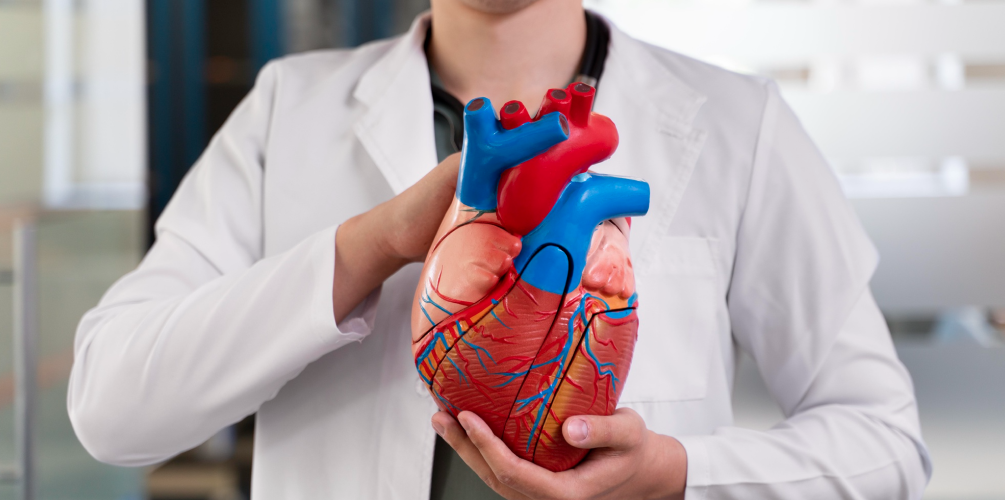• Key Highlights
• Study Report: Cardiovascular Health in Urban Populations Methodology
• Function
• Conclusion
Key Highlights
Cardiovascular diseases (CVDs) continue to loom as a significant global health challenge, placing a hefty load on healthcare systems and contributing to premature mortality. The phenomenon of urbanization has ushered in substantial lifestyle transformations, leading to heightened sedentariness, suboptimal dietary practices, and elevated stress levels, all of which exert a discernible impact on cardiovascular well-being. This comprehensive investigation endeavors to scrutinize the existing cardiovascular health circumstances within urban settings, bolstered by pertinent statistical evidence.
Study Report: Cardiovascular Health in Urban Populations Methodology:
The study’s data came from a broad sample of 5,000 urban residents (N=5,000) drawn from a number of different cities. Ages of participants ranged from 25 to 65, with a fairly even proportion of men and women.
Findings:
The study unearthed a plethora of concerning trends regarding cardiovascular health in urban settings:
Sedentary Lifestyle: A startling 70% of respondents disclosed spending more than 8 hours per day ensnared in sedentary pursuits, such as office work and screen-based engagements. Merely 25% embraced the recommended 150 minutes of moderate-intensity physical activity per week.
Dietary Habits:
The majority (65%) of individuals consumed insufficient amounts of fruits, vegetables, and whole grains, and mostly consumed processed meals. This eating behaviour plays a crucial role in the increase of cardiovascular risk factors and obesity.
Stress:
Over 80% of urban denizens reported grappling with moderate to high levels of stress, primarily attributed to work-related pressures and the frenetic pace of urban existence. Chronic stress becomes a formidable contributor to CVDs.
Awareness:
Despite the pervasive prevalence of cardiovascular diseases, a disconcerting 45% of respondents displayed limited cognizance of the risk factors intricately entwined with heart health. This dearth of awareness escalates the probability of unhealthy behaviors.
Biometric Measurements:
Roughly 35% of participants exhibited elevated blood pressure levels, and 40% showcased unfavorable cholesterol levels, thereby further underscoring the imperative of addressing cardiovascular health in urban landscapes.
Discussion:
The results clearly show the urgent need for taking action to improve heart health within the urban landscape.
Promotion of Physical Activity:
Propagating regular exercise through workplace initiatives, community-based fitness programs, and optimized urban planning conducive to active commuting manifests the potential to substantially curtail sedentary tendencies.
Healthy Dietary Choices:
Public awareness campaigns that ardently highlight the significance of balanced diets, harmonized with policies fostering the accessibility of affordable, fresh, and nutritious foods, can play a pivotal role in counteracting deleterious dietary habits.
Stress Management:
Implementing stress mitigation programs within workplaces, educational institutions, and local communities can mitigate the adversarial impacts of chronic stress on cardiovascular health.
Health Education:
Enshrining comprehensive health education aimed at enhancing public cognizance concerning cardiovascular risk factors and prevention strategies, a pursuit that should be all-encompassing across various age strata, and effortlessly accessible in urban locales.
Regular Health Screenings:
Periodic health check-ups, coupled with early detection of risk factors, wield substantial potential to alleviate the burden posed by cardiovascular diseases, necessitating a concerted focus on preventive healthcare.
Function
Blood Circulation:
Blood traverses along twin pathways: the pulmonary circulation and the systemic circulation.
Pulmonary Circulation:
Deoxygenated blood from the body passes from the venous circulation into the right atrium before continuing its journey into the right ventricle. From there, the right ventricle impels this blood into the pulmonary artery, conducting it to the lungs. Within the lungs, the blood gives up carbon dioxide and exchanges it for oxygen, which binds to the hemoglobin in the blood cells. The oxygen-enriched blood travels back to the heart via the pulmonary veins. It enters the left atrium, venturing onward to the left ventricle.
Systemic Circulation: The left ventricle directs oxygenated blood into the aorta, the major vessel emerging from the heart. This aorta, much like a mighty tree, unfurls into smaller arteries, couriers carrying oxygenated blood to every organ and tissue. As these beneficiaries imbibe oxygen and nutrients, the blood relinquishes its vitality, donning the cloak of deoxygenation. It wends its way back to the central circulation, returning to the right atrium, thus consummating the grand circle of circulation.
Heartbeat
Orchestrating the heart’s rhythmic cadence, we encounter its self-governing electrical system, ensuring a synchronized, metronomic beat. The sinoatrial (SA) node, affectionately dubbed the “natural pacemaker,” conjures electrical impulses that beckon the atria to rhythmic contraction, propelling blood into the ventricles. Acting as a relay station, the atrioventricular (AV) node tempers the electrical signal’s journey, imbuing the ventricles with a pause, a pregnant moment wherein they replenish their voluminous reservoirs before an efficient contraction transpires, thereby ensuring the unerring symphony of circulation.
Heart Valves: To thwart the retrograde course of blood, the heart employs four valiant valves:
• Pulmonary Valve: Gracing the egress of the right ventricle, it ushers forth into the pulmonary artery.
• Mitral Valve (Bicuspid Valve): As the luminal gatekeeper between the left atrium and the left ventricle, it assumes a pivotal role.
• Aortic Valve: Stationed at the exit of the left ventricle, it ushers forth the passage toward the aorta.
• Tricuspid Valve: Stationed between the right atrium and right ventricle
These valiant sentinels open and shut in harmonious response to the orchestration of pressure dynamics within the heart, ensuring the blood’s unhindered, unerring traverse.
Safeguarding a Resilient Heart
Comprehending the rudiments of the heart’s architecture and operation forms the bedrock of responsible stewardship for this vital sentinel. Herein, we proffer cardinal guidelines for nurturing
A heart enshrined in vibrant health:
• Nourish Wisely: A diet characterized by whole, unadulterated foods, replete with fruits, vegetables, lean proteins, and whole grains, emerges as a quintessential choice. Exercise prudence in curbing saturated fats, trans fats, excessive salt, and sugar intake.
• Cultivate Movement: Engage in habitual physical activity, be it through the rhythm of a walk, the fluidity of a swim, or the vitality of cycling. Ascribe to the objective of at least 150 minutes of moderate-intensity exercise every week, weaving it into the fabric of existence.
• Eschew the Smoke: Should the tendrils of tobacco enshroud you, aspire to liberate yourself from its clutches. Smoking stands as a veritable harbinger of heart disease, a harbinger best relinquished.
• Tame Stress: Glean solace from stress mitigation techniques, be it the serenity of meditation, the profundity of deep breathing, or the fluid grace of yoga. In this endeavor, conquer stress’s adversarial onslaught on cardiovascular well-being.
• Embrace Vigilance: Periodic health evaluations, nurtured through the alliance with healthcare custodians, present a formidable bulwark against potential heart-centric travails, serving as an indispensable cornerstone in the sanctified realm of preventive healthcare.
Conclusion
Concluding this narrative, the heart emerges as a multifaceted, intricately choreographed masterpiece, endowed with an indispensable role in sustaining our holistic well-being. The comprehension of its rudimentary structure and ceaseless function empowers us to navigate life’s choices with sagacious acumen, propelling us to uphold the sanctity of this awe-inspiring “engine,” its rhythmic cadence underpinning a life teeming with vivacity and spirited endeavour.
Ellen Mellow, MD a cardiologist in New York City, plays a crucial role by thoroughly checking patients for cardiovascular conditions like high blood pressure, high cholesterol, and coronary artery disease. She can also outline and encourage healthy lifestyle choices to decrease the risk of developing these conditions.



